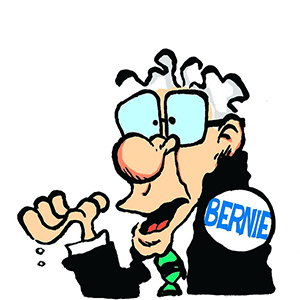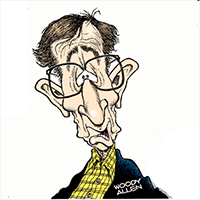Luigi Mangione's 15-day path from New York to Altoona McDonald's
Published in News & Features
NEW YORK — Stepping out of the Port Authority bus terminal late in the evening on Nov. 24, authorities say, Luigi Mangione took a taxi to the New York Hilton Midtown, where UnitedHealth Group Inc. planned its annual investor conference 10 days later.
Mangione then spent about an hour walking in the area of the sprawling hotel, which has entrances on 6th Avenue and 54th Street, scoping out the site that was scheduled to host company executives, including insurance chief Brian Thompson.
It was a dark journey for the 26-year-old that would take him from Ivy League graduate to alleged killer this week as New York and U.S. authorities separately charged him with murder.
Mangione, who is in federal custody, has yet to enter a plea to the U.S. case, speaking in court Thursday only to acknowledge his rights and confirm that he understood the charges against him. He’ll enter a plea Monday to the New York indictment.
His lawyer, Karen Friedman Agnifilo, didn’t comment on the evidence but said Thursday that adding federal charges to “an already overcharged first-degree murder and state terror case is highly unusual and raises serious constitutional and statutory double jeopardy concerns.” She’s vowed to fight the charges.
The details spelled out in charging documents, court proceedings and news conferences show a troubled young man. They also depict a sharper portrait of the 15 days from when Mangione first entered New York City to his capture at a McDonald’s restaurant in a small central Pennsylvania town.
The FBI complaint, which also accuses Mangione of stalking, suggests he had been plotting the murder for weeks. During that period, authorities say he had stopped communicating with friends and family. A handwritten notebook discovered when he was captured expressed “hostility towards the health insurance industry and wealthy executives in particular,” the FBI said.
One entry on Aug. 15 said “the details are finally coming together” and he was “glad – in a way – that I’ve procrastinated, bc (because) it allowed me to learn more about” UnitedHealth. It said “the target is insurance” because “it checks every box.”
By Oct. 22, UnitedHealth’s investor conference was six weeks away. He wrote, according to the FBI, “1.5 months. This investor conference is a true windfall…and – most importantly – the message becomes self evident.” The entry also described “an intent to ‘wack’ the CEO of one of the insurance companies at its investor conference.”
That night of Nov. 24, Mangione stepped off a Greyhound that began its trip to Manhattan in Atlanta, but it’s unclear where he boarded. After his visit to the area of the Hilton, Mangione then took a taxi to the HI New York City Hostel on the Upper West Side, a haven for young travelers and international visitors.
To check in, he used a fake New Jersey driver’s license with his own photo and the name “Mark Rosario.” The clerk asked him to lower his mask, revealing a smiling face. A security camera captured two images of Mangione that were later circulated nationally. In the coming days, Mangione extended his stay at the hostel several times.
Authorities have not yet detailed how Mangione passed the next week, or whether he joined anyone for Thanksgiving dinner.
Interviews with Mangione’s acquaintances signaled that at some point had been suffering back pain from a misaligned vertebrae. A Goodreads account in his name lists at least five books about chronic back pain and fitness, and his X account banner features an X-ray image of a lower back with spinal screws that are often inserted during surgery.
Dec. 4
On Dec. 4, the day of UnitedHealth’s investor conference, Mangione left the hostel at 5:34 a.m. He rode an electric bike down Central Park West, wearing a dark jacket and a gray backpack. By 5:41 a.m., he was walking near the hotel, video shows. He stopped at a nearby Starbucks to buy a water bottle, and appeared to speak into a mobile phone at least once.
By 6:38 a.m., he stood across from the 54th Street entrance to the hotel. Six minutes later, he spotted Thompson and crossed the street. Wearing a mask, a hood and the backpack, Mangione stepped out from between two parked cars.
He allegedly then raised a black gun with a silencer, firing several shots and hitting Thompson in the leg and the back. Thompson, 50, was a father of two children. He was pronounced dead at 7:12 a.m.
Police later found spent 9-millimeter shell casings and a live round with the words “deny,” “delay,” and “depose” written on them. Authorities say Mangione ran to 55th Street, got on an electric-powered bike and rode into Central Park, where he ditched the backpack, which police later found.
Mangione then rode north through the park, emerging near 77th Street and continuing uptown on Central Park West, authorities say. A few blocks later, he lost the bike and caught a taxi at 7:04 a.m. for the George Washington Bridge bus terminal at 179th Street. About 7:30 a.m., he entered the facility, and he wasn’t captured again on video.
The New York Police Department initially suspected Mangione left New York from the bus terminal, but later concluded he took the subway to Penn Station and then a train to Philadelphia, according to a spokesperson. Authorities in Pennsylvania say he spent several days there, traveling to Pittsburgh before ending up in Altoona.
Altoona McDonald’s
Mangione settled on Dec. 9 into a seat in the back of a McDonald’s in Altoona, a small city 280 miles west of Manhattan.
He wore a black coat, a tan ski cap and a blue medical face mask. He was using a laptop computer, and a backpack was on the floor. A customer noticed him and thought he could be the notorious suspect. He told an employee, who called police at 9:14 a.m.
Officer Tyler Frye, who’d been on the job six months, and his partner asked Mangione to pull down his mask. The officers recognized him. Frye asked if Mangione had been to New York City recently. Mangione began to shake.
They asked for ID, and Mangione showed the same fake driver’s license he used at the hostel. Police ran the license through a national database and got no match. Officers told Mangione he was under official investigation and if he lied about his identity, he would get arrested. Mangione then revealed his name. Asked why he lied, he said: “I clearly shouldn’t have.”
Mangione was handcuffed and charged with forgery and providing false identification to law enforcement. At the Altoona police station, officers checked Mangione’s backpack and found almost $8,000 in U.S. dollars, foreign currency worth $2,000 and a passport with Mangione’s real name.
Ghost Gun
He carried Faraday bags, which block signals from laptops and mobile phones, as well as additional face masks. He also had a black pistol with a metal slide, a plastic handle, and a loaded magazine with six 9-millimeter rounds remaining. The gun was 3-D printed, as was the silencer.
Such ghost guns can be made at home and lack serial numbers that make them traceable. Knowledge of computer-aided design, or CAD, can help in assembling ghost guns. New York police said they believe the gun was used to kill Thompson.
Mangione’s bag revealed writings, including a letter to “the Feds,” according to the FBI complaint.
“I wasn’t working with anyone,” Mangione wrote. “This was fairly trivial: some elementary social engineering, basic CAD, a lot of patience.”
He added: “P.S. you can check serial numbers to verify this is all self-funded. My own ATM withdrawals.”
(Myles Miller and Patricia Hurtado contributed to this report.)
©2024 Bloomberg L.P. Visit bloomberg.com. Distributed by Tribune Content Agency, LLC.










Comments